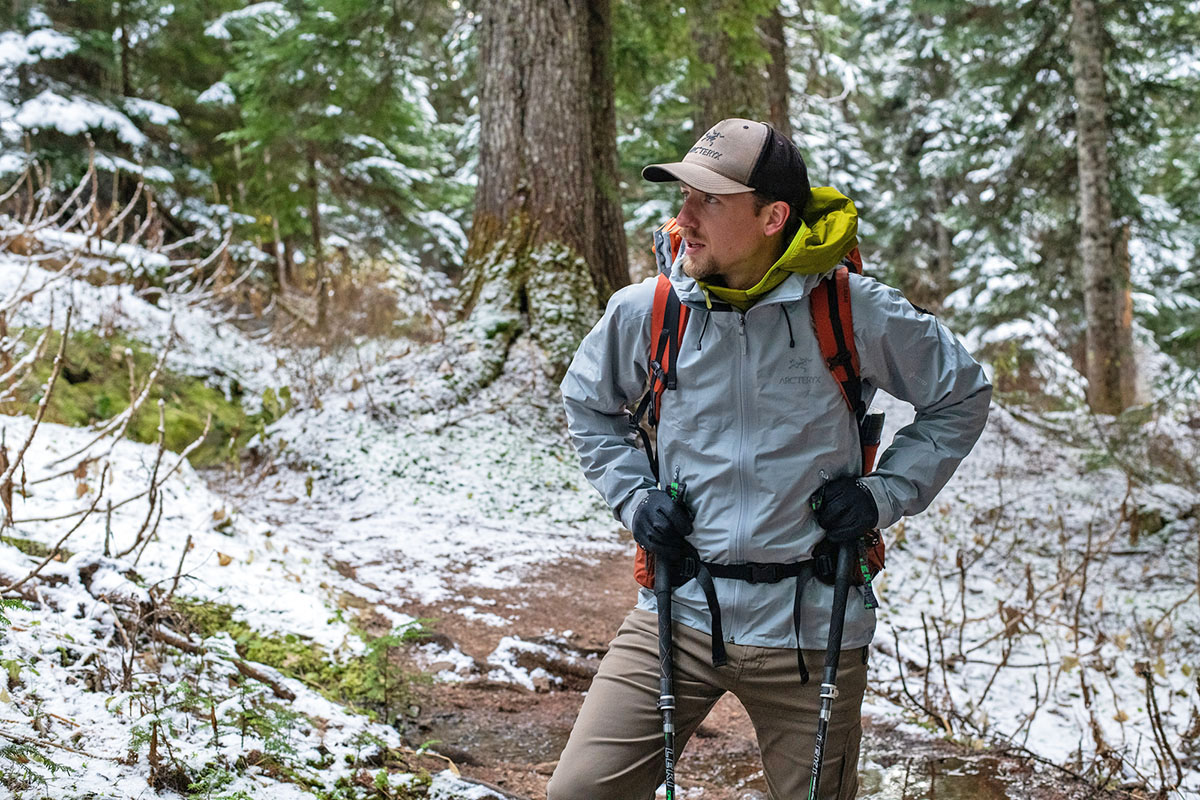
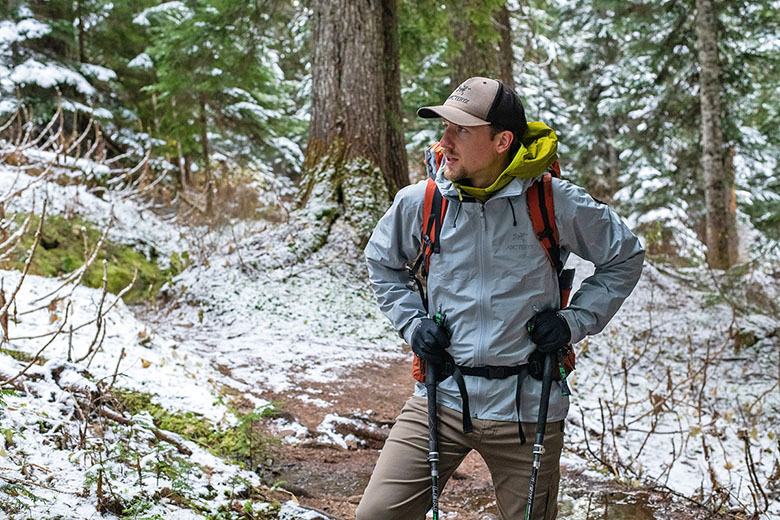
Switchback Travel (Jason Hummel)
Price: $450
Weight: 13.8 oz. (men’s medium)
Waterproofing: 3L Gore-Tex
What we like: Strong combination of weight, breathability, and comfort.
What we don’t: Thin construction and standard Gore-Tex build limit its multi-sport appeal.
See the Men's Arc'teryx Beta LT See the Women's Arc'teryx Beta LT
Arc’teryx’s hardshell collection is highly revered among avid backcountry-goers, and their Beta LT has been a mainstay for years. Updatedseveral seasons back, the latest jacket represents a fairly substantial shift from the past-generation LT, featuring standard 3-layer Gore-Tex (no longer the high-end “Pro” construction) and the addition of pit zips (the old model didn’t have them). Importantly, the shell is still light and packable, breathes well, and can hold its own in moderately rough conditions. However, the downgraded weatherproofing and thin build make it less reliable for serious outdoor pursuits like mountaineering or backcountry skiing. Below we break down the Beta LT’s performance. To see how it stacks up to the competition, see our articles on the best hardshell jackets and best rain jackets.
Editor's note: We updated this review on October 7, 2024, to ensure all product comparisons were current at the time of publishing.
The biggest change with Arc’teryx’s latest Beta LT Jacket was the shift from top-end Gore-Tex Pro to a standard 3-layer Gore-Tex construction. But thankfully, despite some definite compromises in swapping the membranes (which we outline below), I found the difference in weather protection to be fairly minimal. Like nearly every 3-layer Arc’teryx shell we’ve tested, the Beta LT is quite formidable in rowdy conditions: Its 40-denier (D) face fabric and proven Gore-Tex waterproofing have effectively blocked everything from wet and slushy snowfall to strong gusts blowing off of alpine lakes. Further, the drop hem keeps the shell in place under a pack and offers just enough coverage for uses like winter and shoulder-season hiking and on shorter and less intensive ski touring days. It did feel lighter, more delicate, and less bombproof when worn back to back with Arc’teryx’s upgraded Beta AR (which uses 40 and 80D Gore-Tex Pro), but I haven’t had any failures to date.
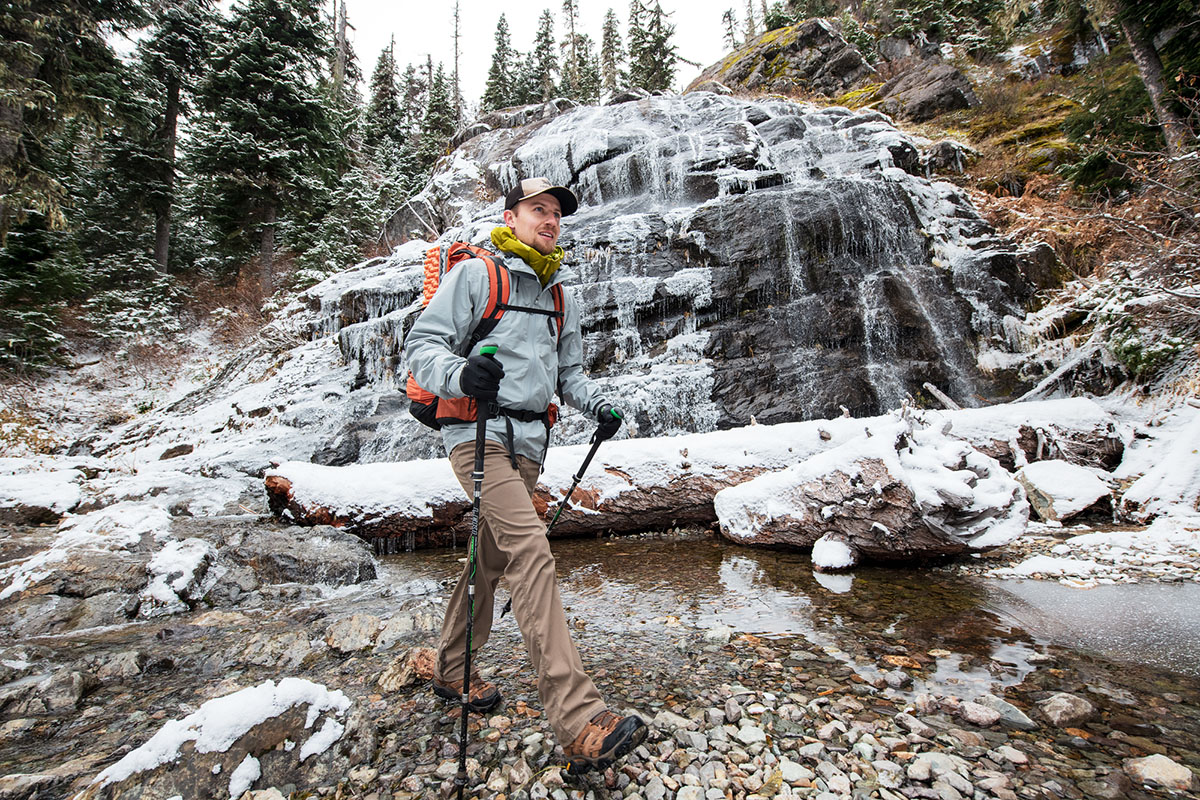
To help seal out the elements, the Beta LT comes with a nice array of thoughtful and protective features. The StormHood is highly adjustable, has a generous brim, and stays locked in place. It also cinches down evenly when worn over just a beanie, ball cap, or lightweight buff, and leaves less excess material along the sides than most helmet-compatible hoods. Further, all of the zippers have held up nicely, and the RS sliders nicely seal out moisture. Rounding out the design, glove-friendly cinches at each side of the hem make it easy to keep out the cold, and rip-and-stick closures at each wrist allow you to secure the cuffs over liner gloves or around bare wrists. Finally, the collar is moderately tall and reaches my bottom lip when zipped, which is nice for ducking into during inclement weather (although alpine-ready shells like the Alpha SV and Beta AR offer more coverage in this area).

I was happily surprised by the Beta LT’s breathability. I run pretty warm, but the combination of the shell’s moderately thin construction and generously sized pit zips (mine measure 13 in.) meant I was able to wear the jacket longer than expected. This included yo-yo laps while backcountry skiing, where I wore the shell over a thin synthetic midlayer on fairly steep ascents of about 20 to 30 minutes. Temperatures were in the high 20s Fahrenheit with very little wind—conditions that typically cause me to overheat—but I remained comfortable during the climb and continued wearing the shell on the way down, which cut out a step of the transition process.

My impressions were similar while hiking: I was able to continue wearing the Beta a little longer than more substantial hardshells I’ve been testing, including the burlier Beta AR. Technically, Gore’s Active membrane is the most breathable (but still fully waterproof) option in their lineup, but that would mean compromising on toughness. All in all, the Beta LT is a great breather and a nice choice for activities ranging from rainy backpacking trips to spring or mild-weather ski touring.

The “LT” in the Beta’s name is short for “lightweight,” so it came as no surprise that my men’s medium tipped the scales at a reasonable 13.8 ounces (nearly spot-on with Arc’teryx’s listed weight of 13.9 oz.). For reference, Arc’teryx’s Beta AR is slightly heavier at just over 1 pound, although you get a heftier, more weatherproof build, as well as an internal pocket that makes it easier to stow valuables. Outside of Arc’teryx’s lineup, the Beta LT also undercuts competitors like Himali's Monsoon (15.4 oz.) and Patagonia’s Triolet (1 lb. 1.9 oz.), although the latter is again noticeably more robust and feature-rich.
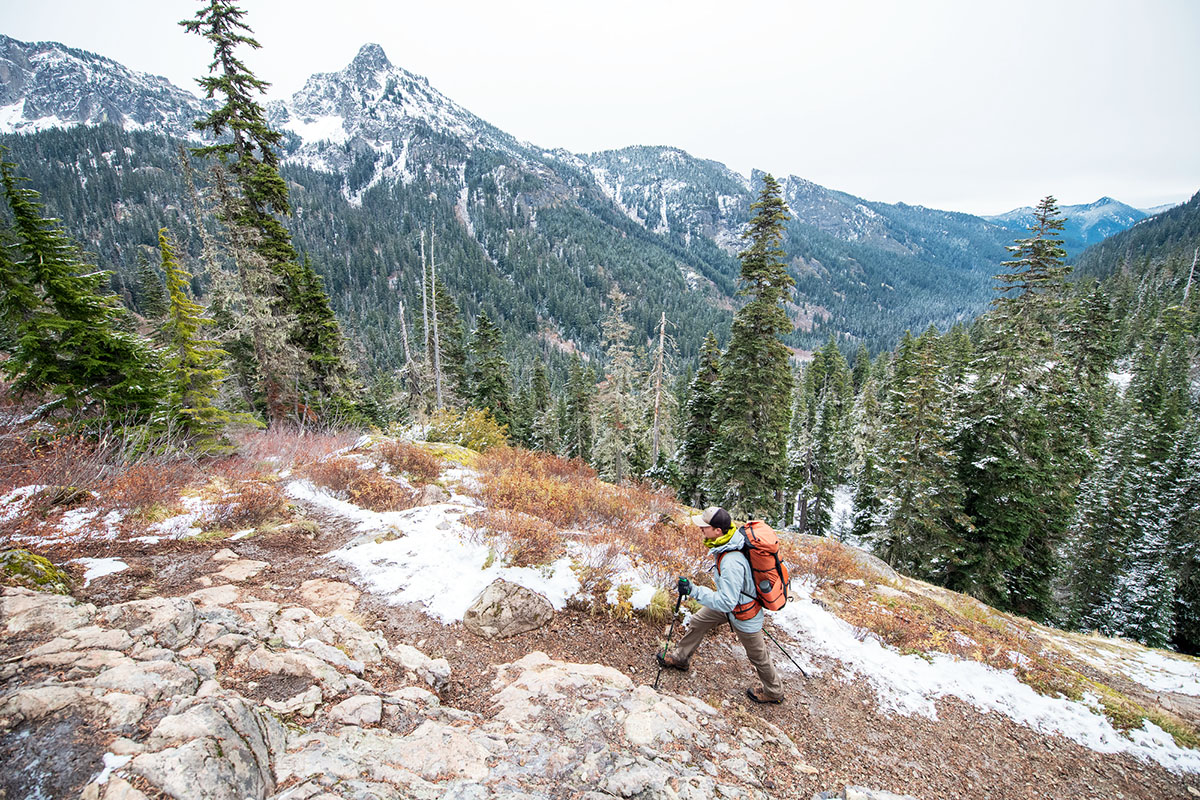
In terms of packability, the Beta LT didn’t disappoint. The jacket rolls easily into its own hood (common among hardshell jackets), and you can cinch it down to about the size of a 32-ounce Nalgene. And it’s worth noting that there’s extra room in the hood when the shell is stuffed down, which means it can be compressed even further in a dedicated compression sack (it ends up being around the size of a large grapefruit). All things considered, for uses like hiking, backpacking, and ski touring, the Beta LT’s size and weight are perfectly reasonable.
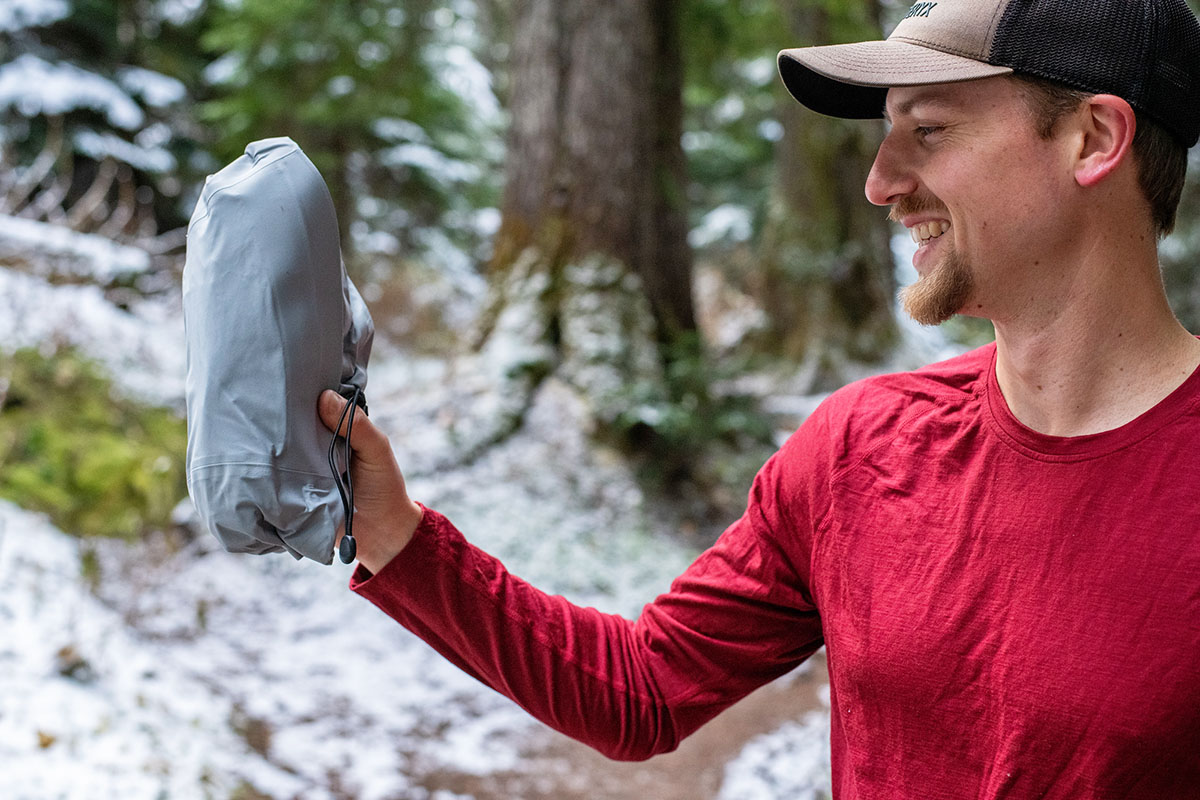
One of the benefits in using Gore’s standard membrane is that the Beta LT now has a noticeably softer and less crinkly construction than its predecessor. In many ways, the latest Beta feels like a quality rain jacket: The interior lining has a tricot backer that’s relatively soft and isn’t prone to growing clammy, and the fabrics in general have a flexible and non-restrictive feel. To be clear, it can’t match the stretchy and mobile build of an alternative like Rab's Kinetic Alpine 2.0 (which uses mechanical stretch in the shell), but it’s certainly more comfortable and quieter than a Gore-Tex Pro design. I also appreciate the patches of fleece-like material at the back of the neck and top of the main zipper on the inside, which is soft against the skin when the jacket is fully zipped. Overall, the rain-jacket- like feel does come with downsides in durability (outlined below), but from a comfort standpoint, the Beta LT is a real winner.
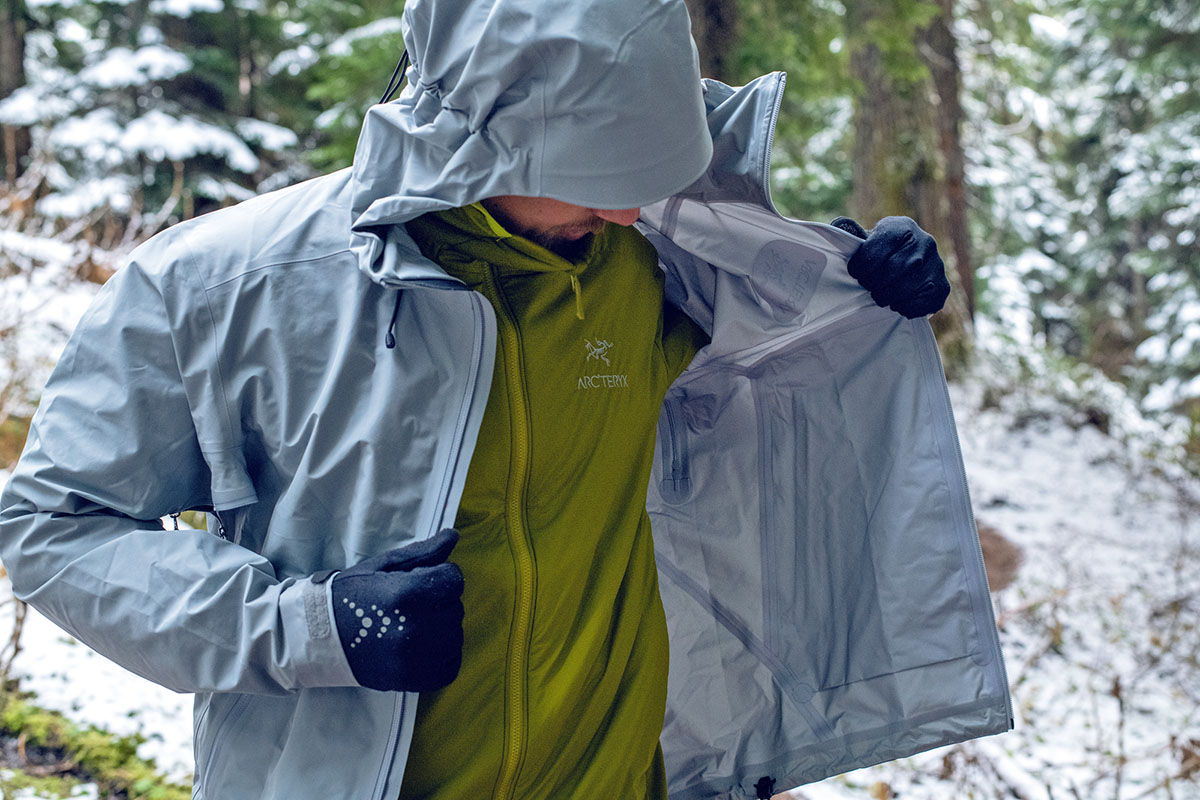
It’s extremely rare that we have build quality concerns with Arc’teryx products, and this largely holds true with the Beta LT Jacket. On one hand, it’s clearly well made and fits a niche that was previously lacking in the brand’s rather extensive hardshell lineup. However, this is one of the few Arc’teryx products I’ve tested that didn’t feel particularly special. In my opinion, this largely comes down to the combination of a standard 3-layer Gore-Tex build (rather than a premium Pro construction), thin and not particularly durable 40D shell, and steep $450 price tag.

To be fair, all of the Beta LT’s details are nicely sorted, and it has the same premium fit and finish that we’ve come to expect from Arc’teryx. But it's not a standout in any major way, and the recent changes make it noticeably less reliable than previous models for serious outdoor pursuits like mountaineering, consistent use around sharp equipment, or being exposed to the rigors of downhill and backcountry skiing. For these uses, I recommend upgrading to the Gore-Tex-Pro-equipped Beta AR (for a considerable $150 more).

We’ve complimented Arc’teryx’s StormHood on a number of occasions, and it’s the same story here. The design is extremely secure, has a nicely sized brim that keeps water from dripping down on your face or ski goggles, and fits well over either a helmet or just a hat. When cinched over a thin beanie or headband, the Beta LT’s shape leaves far less excess material along the sides of the face, which is pretty rare among helmet-compatible hoods. My only complaint is that the adjustments at the front of the hood are small and require pinching to loosen the cord, which is not a glove-friendly process. But otherwise, it’s another premium hood design from the brand.

Along with the thin face fabric, the Beta LT’s minimalist design is evident in its storage layout that consists only of two zippered hand pockets. These are set high enough to remain accessible while wearing a pack, but the layout can still create some challenges during certain activities. I often utilize my midlayer for stowing items like my phone, but when worn over just a baselayer, the lack of an interior pocket becomes a problem. If I were to change one thing about the Beta LT’s build, I would include the same interior chest pocket that’s featured on the AR. Some might wish for more exterior storage as well, but I’ve found it to be less secure overall (despite water-resistant zippers, moisture could still make its way through to your electronics).

The Arc'teryx Beta LT’s two exterior pockets feature the brand's innovative RS zipper sliders. This unique design ditches the fabric “hood” that is typically found above the top of the zipper to keep water from entering the pocket. Arc’teryx technically considers these zippers to only be water-resistant, but we’ve never had moisture enter the pockets of any of our RS-equipped shells. In fact, I tested the Beta LT in the shower by applying consistent pressure at the top of the zipper openings and didn’t experience any leaks. Again, I don’t trust them to protect my electronics in a deluge, but the sliders help minimize weight and bulk and contribute to the jacket’s smooth, clean appearance.

In addition to the high-quality build, another element that sets Arc’teryx apart is how consistently they deliver a precise, tailored fit. The Beta LT has what they consider a “fitted” cut, and we think that’s an accurate designation. My men’s medium fit very well (for reference, I’m 5’9” and 155 lb.) and offered excellent range of motion when wearing a baselayer or lightweight puffy underneath. That said, if you’ll be in truly frigid weather and anticipate needing a thicker midlayer, you may want to consider opting for the Beta AR, which has a “regular” fit with more room in the torso (although it’s bulkier when only wearing a baselayer). And those who need added coverage while skiing or climbing might prefer Arc’teryx’s Alpha series, including the longer Alpha SV or standard Alpha Jacket (both have a 30.9-in. center back length in a men’s medium.). But overall, the Beta LT (30 in.) provided good coverage for me, falling just below my waist in the front and slightly lower in the back.
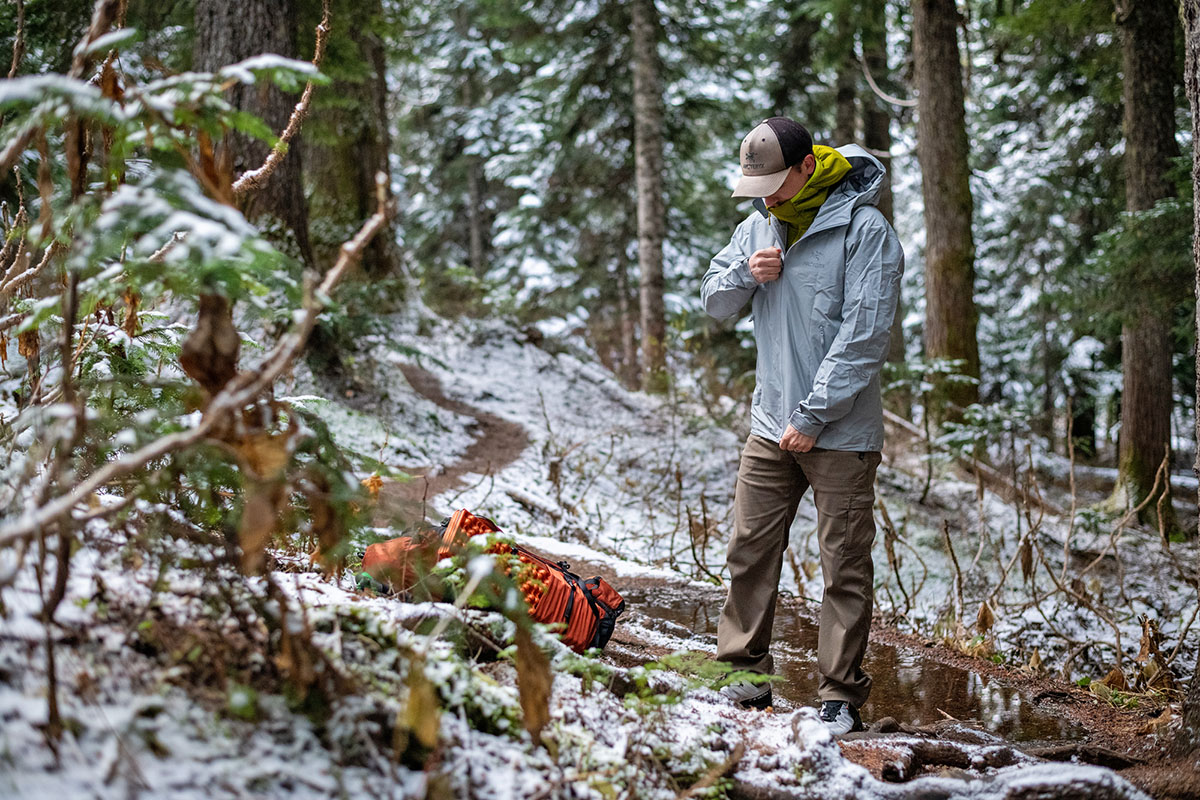
In recent years, many major outdoor brands have made notable progress toward creating more sustainably made products, and we’re excited to see Arc’teryx working to improve their lineup. In this case, the Beta LT’s fabrics are bluesign-approved, meaning that they’ve been deemed safe for workers, consumers, and the environment. The jacket is also Fair Trade Certified, which means Arc'teryx put extra money into production to ensure workers are compensated fairly and have access to resources like healthcare and childcare programs. The brand is aiming to have 80% of their products meet this designation by 2025, which is a laudable goal.

We put the men’s Beta LT through its paces for this review, and Arc’teryx also offers the design in a dedicated women’s version. The women’s Beta LT Jacket retails for $450 and uses a similar 40D, 3-layer Gore-Tex construction but weighs less at 12.3 ounces and is sold in different colorways (center back length is also shorter at a listed 27.2 in.). We haven’t had a chance to test the women’s shell, but given the identical feature set and minor spec differences, we expect performance to be very similar across the board.

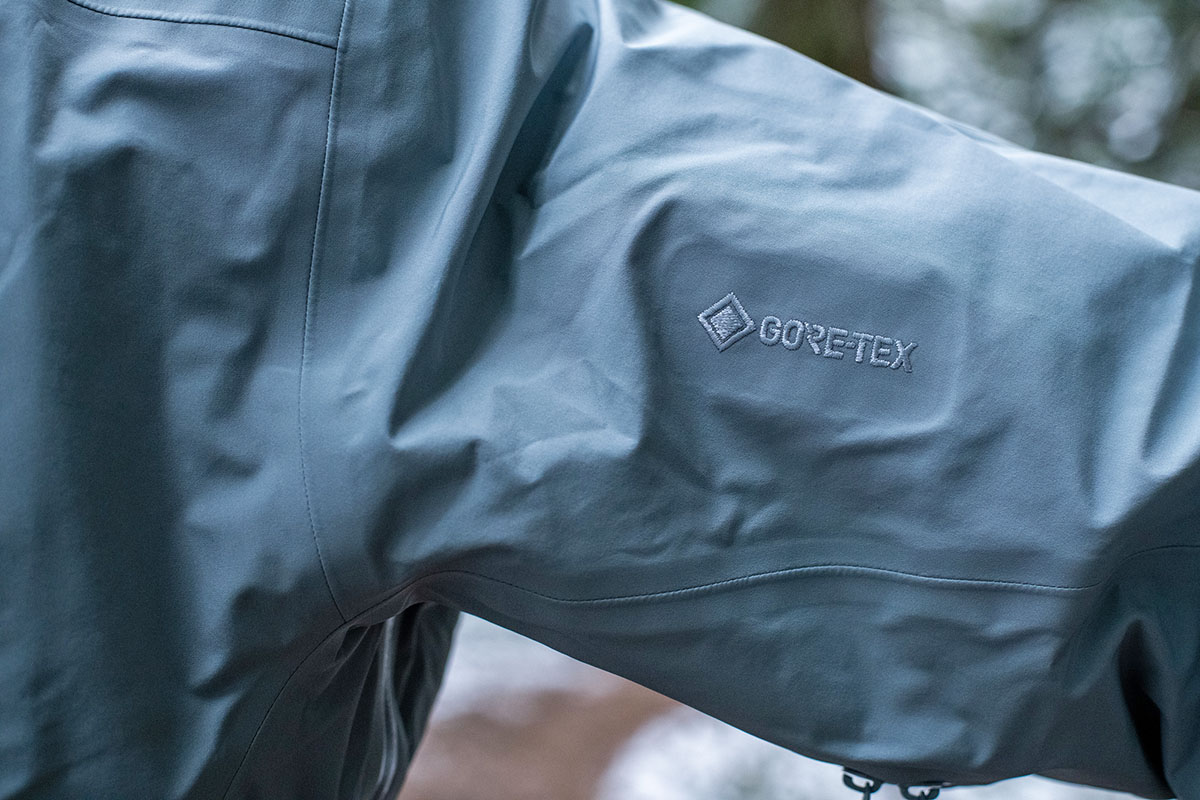
| Jacket | Price | Weight | Waterproofing | Denier | Pit Zips | Pockets |
|---|---|---|---|---|---|---|
| Arc'teryx Beta LT | $450 | 13.9 oz. | 3L Gore-Tex | 40D | Yes | 2 hand |
| Arc'teryx Beta AR | $600 | 1 lb. 0.3 oz. | 3L Gore-Tex Pro | 40D & 80D | Yes | 2 hand, 1 chest |
| Arc'teryx Beta Jacket | $400 | 13.2 oz. | 3L Gore-Tex | 80D | No | 2 hand, 1 internal |
| Himali Monsoon | $365 | 15.4 oz. | 3L Toray | 50D | Yes | 2 hand, 1 internal |
| Patagonia Triolet | $449 | 1 lb. 1.9 oz. | 3L Gore-Tex | 75D | Yes | 2 hand, 2 chest |
Arc’teryx is a clear leader in the premium hardshell market, so a number of the Beta LT’s strongest competitors come from within the brand. First is the top-end Beta AR, which gets you an upgraded Gore-Tex Pro build that’s more protective and versatile for winter activities like skiing, along with panels of thick 80D fabric in high-wear areas. Arc’teryx also included a handy chest pocket and their DropHood rather than StormHood (there is a dedicated StormHood-equipped version available), which offers a little less coverage but has a separate collar to protect against drafts and moisture when you’re not wearing the hood. The AR is a little heavier at just over 1 pound, and not everyone will be willing to spend an extra $150 for the added features and protection, but there’s no denying the impressive overall performance.
Next up is a newer addition to the Beta family: the standard Beta Jacket. Compared to the Beta AR above, the Beta is a small step down in weatherproofing with standard Gore-Tex (similar to the LT), although you get Gore’s soft C-Knit backer for a nice boost in comfort. The Beta is also slightly lighter than the LT at 13.2 ounces, cheaper by $50, and boasts a thicker 80D face fabric that's noticeably more confidence-inspiring around sharp equipment. But that's about where the praise ends: The Beta's hood design is more basic and not helmet-compatible, and you don’t get pit zips for regulating temperature (for more, see our in-depth Beta Jacket review). These features aren’t must-haves for everyone, but we consider the Beta LT’s upgrades worth the price jump.

Outside of Arc’teryx’s collection, Himali's Monsoon stacks up decently well to the Beta LT but at a much lower $365 price point. Rather than Gore-Tex waterproofing, the Himali swaps in their in-house Toray membrane that we've found to be reliable in most conditions. In testing, we also came away impressed by the Monsoon's attention to detail, including thoughtful touches like soft fleece along the collar and wrists, along with technical must-haves like hipbelt-friendly pockets, a two-way main zipper, a helmet-compatible hood, and a reasonably thick (50D) and confidence-inspiring exterior. To be sure, the Beta LT's Gore-Tex membrane is the more reliable performer in truly harsh mountain environments, but the Monsoon isn't far behind and will save you a good chunk of change. The biggest issue for most will likely be availability: A few retailers carry Himali gear, but chances are you won’t get to try the jacket on before you buy.

Last but not least is Patagonia’s Triolet, which has been one of our favorite hardshells for years for its solid and feature-rich build. For around the same price as the Beta LT, the Triolet is significantly more robust and durable (it uses a 75D standard Gore-Tex construction), offers better coverage with a longer cut, and wins by a landslide in storage with five total pockets (including four exterior and one interior). The Patagonia is bulkier and heavier at 1 pound 1.9 ounces and includes ski-specific features like a Recco reflector and strap to connect to compatible snow pants, but we consider it the more capable option if you plan to spend a good amount of time in the snow.
Editor’s note: We usually provide a live price comparison table below our outdoor gear reviews, but the Beta LT is currently only available directly through Arc'teryx. You can see the Beta LT Jacket page here and support us in the process. Thanks!